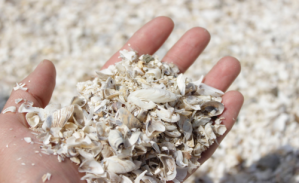The School of Journalism’s graduate program in Environmental Science and Natural Resource Journalism is having a terrific year so we thought we’d share some highlights.
One goal for our students is that they develop a professional portfolio of published or broadcast work while at UM. This advances their network of peer and professional contacts and teaches the art of story pitching and the grace of completing what you set out to do.
This fall, first-year grad students found success with stories about recycling vegetable scraps for area pig farms, the arrival of chronic wasting disease in Montana and a project to protect cutthroat trout on the South Fork Flathead River.
For the second-year students, fall was simply a hair-on-fire semester in the best possible way:
-
High Country News published the work of our Crown Reporting Project winners this fall: Beau Baker’s piece on preparations for the arrival of invasive mussels in Montana, and Olga Kreimer’s overview of a proposed bottled water plant near Flathead Lake.
-
In addition to publishing work in Hakai Magazine and on Montana Public Radio, Matt Blois oversaw production for the launch of Big Bio, a podcast that tells the stories of scientists tackling some of the biggest unanswered questions in biology. He also landed a piece in Civil Eats that looks at meat processing in Montana.
-
 A team investigation led Zachariah Bryan to shine a spotlight on the limited help pregnant Montanans get kicking their addiction.
A team investigation led Zachariah Bryan to shine a spotlight on the limited help pregnant Montanans get kicking their addiction.
-
Nora Saks’ work in Butte focused on new the use of drones to save wild birds from a toxic stew, as well as pressure by the Trump Administration to speed up work on the nation’s largest Superfund site. Her story on two sisters tackling drug use on the Fort Belknap Indian Reservation that aired on Montana Public Radio and NPR’s Weekend Edition last spring won the “award of excellence” from the Broadcast Education Association.
-
Videographer Jayme Dittmar is poised to defend her professional project, Paving Tundra, this winter. She already won the Innovator Award from Planet Forward from a related side project, “Redefining Progress.” Watch for Paving Tundra at a film festival near you in 2018.
Alums have been busy, too:
-
At Montana Public Radio, Nicky Ouellet has continued to cover the Flathead Lake Region like snow covers Glacier National Park. She led national coverage about a small Montana firm that won a huge contract to restore power to Puerto Rico, and she completed a fabulous podcast, Subsurface, about invasive mussels.
-
Kevin Dupzyk is producing the Popular Mechanics Podcast in his role as senior assistant editor at the magazine.
-
Recent graduate Madison Dapcevich is off to San Francisco where she’ll work at I F’ing Love Science as a science writer.
Correction: This article has been edited to clarify that Nicky Ouellet led national coverage on the Puerto Rico power shortage but credit for breaking the story goes to reporter Yanira Hernández Cabiya at Caribbean Business.
The School of Journalism’s graduate program is a hands-on, skills-based program that puts students in the field reporting on issues affecting society and the natural world.
Applications for Fall 2018 are accepted through April 15. Learn more and find out how to apply here.
The master’s program is an advanced curriculum for applicants with undergraduate degrees in journalism, environmental and earth sciences, environmental studies or natural resources. We also seek applicants with professional experience in journalism, the natural resource industries and environmental nonprofit organizations.








































































